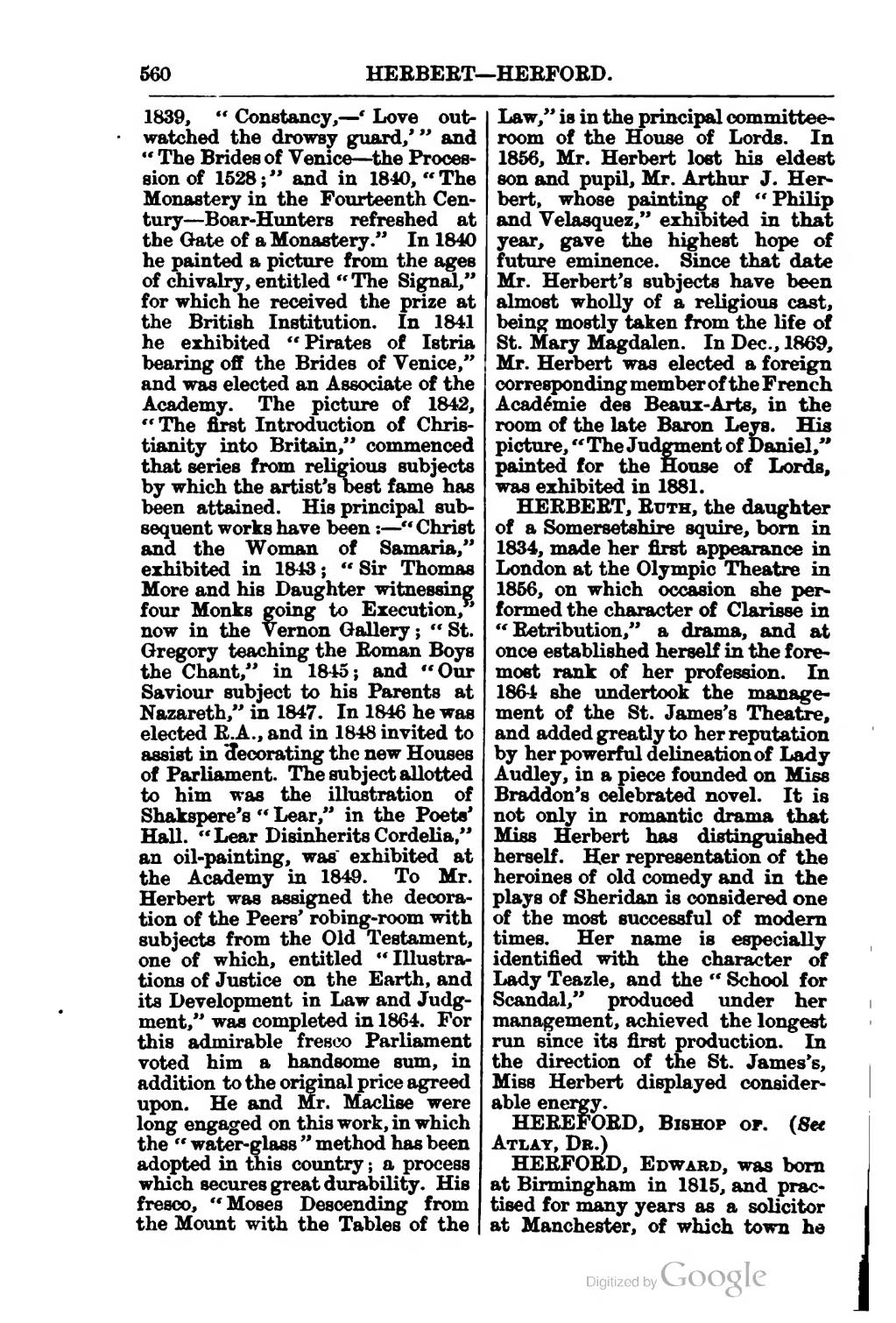560
HEEBEET— HBEFOED.
1839, " Constancy, — ' Love out- watched the drowsy guard,' " and " The Brides of Venice — ^the Proces- sion of 1528;" and in 1840, "The Monastery in the Fourteenth Cen- tury — Boar-Hunters refreshed at the Gate of a Monastery." In 1840 he painted a picture from the ages of chivalry, entitled " The Signal," for which he received the prize at the British Institution. In 1841 he exhibited "Pirates of Istria bearing off the Brides of Venice," and was elected an Associate of the Academy. The picture of 1842, "The flist Introduction of Chris- tianity into Britain," commenced that series from religious subjects by which the artist's best fame has been attained. His principal sub- sequent works have been : — " Christ and the Woman of Samaria," exhibited in 1843; "Sir Thomas More and his Daughter witnessing four Monks going to Execution, now in the Vernon Gallery ; "St. Gregory teaching the Eoman Boys the Chant," in 1845; and "Our Saviour subject to his Parents at Nazareth," in 1847. In 1846 he was elected E.A., and in 1848 invited to assist in decorating the new Houses of Parliament. The subject allotted to him was the illustration of Shiispere's " Lear," in the Poets' Hall. "Lear Disinherits Cordelia," an oil-painting, was' eichibited at the Academy in 1848. To Mr. Herbert was assigned the decora- tion of the Peers' robing-room with subjects from the Old Testament, one of which, entitled "Illustra- tions of Justice on the Earth, and its Development in Law and Judg- ment," was completed in 1864. For this admirable fresco Parliament voted him a handsome sum, in addition to the original price agreed upon. He and Mr. Maclise were long engaged on this work, in which the " water-glass " method has been adopted in this country ; a process which secures great durability. His fresco, "Moses Descending from the Mount with the Tables of the
Law," is in the principal committee* room of the House of Lords. In 1856, Mr. Herbert lost his eldest son and pupil, Mr. Arthur J. Her- bert, whose painting of "Philip and Velasquez," exhibited in that year, gave the highest hope of future eminence. Since that date Mr. Herbert's subjects have been almost wholly of a religious cast, being mostly taken from the life of St. Mary Magdalen. In Dec., 1869, Mr. Herbert was elected a foreign corresponding member of the French Acad^mie des Beaux-Arts, in the room of the late Baron Leys. His picture, " The Judgment of Daniel," painted for the House of Lords, was exhibited in 1881.
HEEBEET, Euth, the daughter of a Somersetshire squire, born in 1834, made her first appearance in London at the Olympic Theatre in 1856, on which occasion she per- formed the character of Clarisse in " Eetribution," a drama, and at once established herself in the fore* most rank of her profession. In 1864 she undertook the manage- ment of the St. James's Theatre, and added greatly to her reputation by her powerful delineation of Lady Audley, in a piece founded on Miss Braddon's celebrated novel. It is not only in romantic drama that Miss Herbert has distinguished herself. Her representation of the heroines of old comedy and in the plays of Sheridan is considered one of the most successfiil of modern times. Her name is especially identified with the character of Lady Teazle, and the " School for Scandal," produced under her management, achieved the longest nm since its first production. In the direction of the St. James's, Miss Herbert displayed consider- able energy.
HEEEFOED, Bishop of. {See Atlay, Dr.)
HEEFOED, Edward, was born at Birmingham in 1815, and prac- tised for many years as a solicitor at Manchester, of which town he
